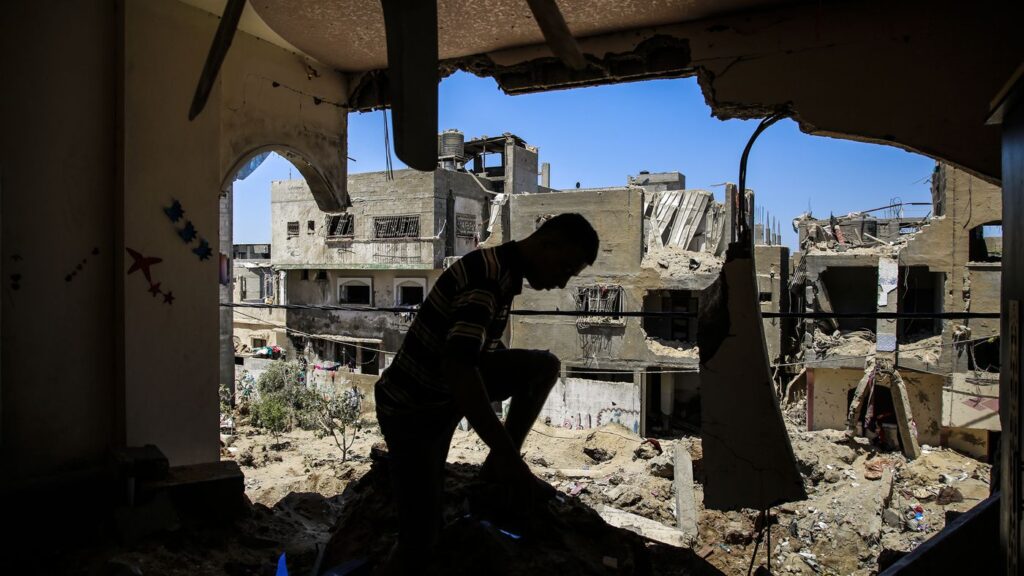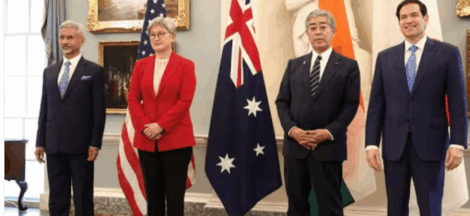The announcement of a prisoner swap deal between warring Hamas and Israel mediated by Qatar and Egypt and agreed by Israel, Hamas and the United States may have led to a temporary armistice in the region and selective exchange of captives from both the sides , the issue of a viable state of Palestine and the status of the so-called Palestinian Authority, however, continue to remain opaque. The fight between Palestinian terror groups and Israeli Defence Force (IDF) is far from being over.
The two Palestinian territories — Gaza and the West Bank — led by two belligerent Palestinian factions, Hamas in Gaza and Fatah in most parts of the West Bank, make the constitution of a workable independent state of Palestine difficult. Since 1994, the so-called Palestinian Authority has administered parts of the West Bank under its control, mainly the major Palestinian population centres and areas immediately surrounding them. Roughly 60 percent of the West Bank remains under the thumb of Israeli civil and military administrations, impeding movement of people and goods through the territory. The future control of the Gaza Strip may follow the West Bank line.
Stateless Palestinians are spread all over the region with a large majority of them living outside Gaza and the West Bank. A majority of Jordan’s population today is Palestinian. A country consisting of two or more separately held geographical locations is rarely workable. It did not work for Pakistan in 1971. East Pakistan became independent Bangladesh. Of the total number of around 13.5 million Palestinians in West Asia, only 37 percent live in the West Bank (3.95 million) and the Gaza Strip (1.96 million).
The U.S. government estimates the total Palestinian population at three million in the West Bank and two million in the Gaza Strip (midyear 2022). Palestinian residents of the two territories are predominantly Sunni Muslims. The rest belong to Shia, Sunni and Ahmadi communities. A viable state of Palestine may be possible if it is curved out of adjacent countries in West Asia such as Jordan, Syria or Egypt. And, that is most unlikely to happen. Paradoxically, as Muslims, Palestinians fighting Jews in Israel may have vocal support from Islamic countries and populations across the world, but few are willing to fight Israel physically today for Palestinians in Gaza and the West Bank.
Large West Asian Muslim countries as well as the US would like Hamas and Fatah to keep fighting Israel in their respective geopolitical interests. Ironically, Shiite Iran is Israel’s No.1 enemy. Yemeni Houthis, a Zaydi Shiite movement supported by Iran and hated by Saudi Arabia, are also strongly against Israel. The Houthis themselves have always been anti-Israel and anti-West. Since the early 2000s, the popular Houthi slogan has been “God is the greatest, Death to America, Death to Israel, Curse on the Jews, Victory to Islam” (in Arabic). The Houthis took over Sanaa, Yemen’s capital, in September 2014 and seized control over much of north Yemen by 2016. A section of Yemeni administration and Sunni-dominated states have repeatedly alleged that Iran and its proxy Hezbollah have provided arms, training, and financial support to the Houthis. But Iran and Hezbollah have denied such acts or downplayed the claims.
While most West Asian countries dislike Israel and Jews, few are ready to fight Israel for the small section of Palestinians living in the West Bank and Gaza. Despite the recognition of the state of Palestine by as many as 139 of 193 United Nations members as of now, the state does not physically exist with an elected government. This recognition was given after the Palestinian National Council declared its independence on November 15, 1988, in Algeria. The US has long been banking on Mahmoud Abbas, the Palestinian Authority president, now a highly unpopular leader among Palestinians, to take the reins of the enclave after Hamas is uprooted as the governing force in the Gaza Strip.
It is said that 87-year-old Abbas is ready to step in, but only “within the framework of a comprehensive political solution”—an answer to the problem that he argues would necessitate creating an independent Palestinian state that includes all of the occupied West Bank, Gaza Strip, and East Jerusalem in its entirety. Anti-Israel Palestinian fighters, however, don’t trust so-called pacifist Abbas, who has been a Palestinian Authority president for over three decades. Abbas has consistently opposed an armed rebellion as a means to pressure Israel and the West into obtaining statehood. Since 1994, the Palestinian Authority has administered only 40 percent of the West Bank, leaving the rest of the area under full Israeli civil and military control.
If Arab countries are truly concerned about Palestinians they should hopefully sit together to plan for a state for Palestinians that will work like any other state in the region. Maybe, Israel can also be invited to offer practical input. The concept of a two-part Palestinian state with the Gaza Strip in one end and West Bank in the middle is impractical and would be rather impossible to form a coherent economic and social entity, on the basis of which the Palestinian people can conduct regular business, build essential infrastructure and develop an economy promoting health, wealth and future progress of the community. Under the existing conditions, neither the Gaza Strip nor the West Bank offers security and economic and political freedom to Palestinians. The West Bank has witnessed the expansion of illegal Jewish settlements over the years. They are carried out with full American and Western complicity.
In fact, the US is among some 55 states which are yet to recognise the state of Palestine. The other countries in this block include France and the United Kingdom. The US, UK and France stated they would not recognise a Palestinian state until the conflict with Israel was resolved peacefully. A lasting peace resolution of the state of Palestine is possible only if the West Asian states, Israel and the US camp come together to help create a single settlement for the Palestinians in the region. Willing Palestinians may be financially helped to acquire a new land for themselves somewhat on the lines of Zionists’ acquisition of land in the 1930s to create Israel.
Funded by the rich American and British Jews, the International Zionist Organisation financially induced Jewish refugees, mostly from Europe and Russia, to buy out land from both Palestinian and non-Palestinian landowners, combining over 80 percent of the estates, and also from government, churches, foreign companies and farmers, to create Israel. Under the present situation, it is nearly impossible for Hamas, Houthis or Fatah to create a viable state of Palestine by merely fighting Israel, individually or collectively. Palestinians seem to have lost their battle a long time ago. (IPA Service)




 Shivakumar gets court clearance for foreign trip
Shivakumar gets court clearance for foreign trip 